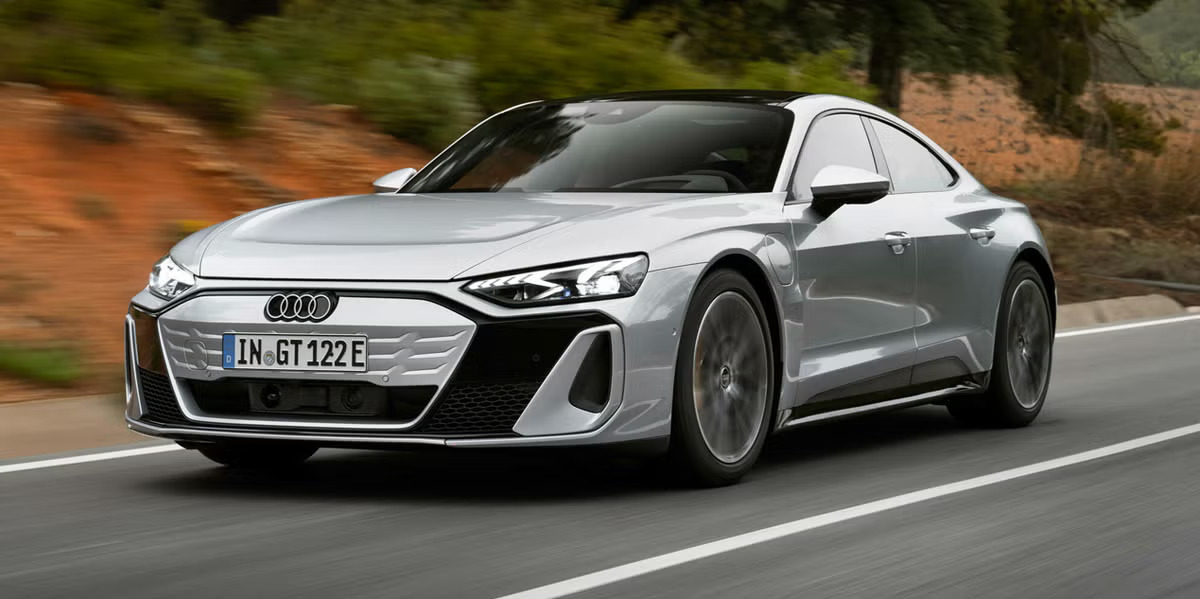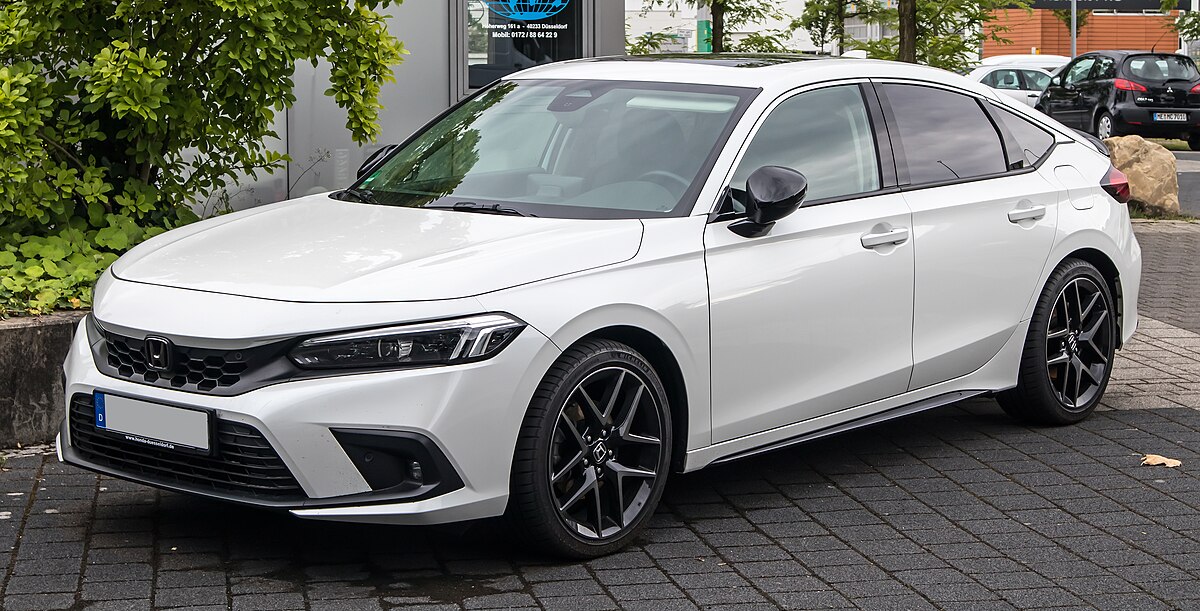The evolution of automotive security has dramatically transformed how we interact with our vehicles, with key fobs representing both a pinnacle of convenience and a significant vulnerability in modern car security.
As vehicles become increasingly connected and sophisticated, the technology behind keyless entry and ignition systems has become a critical battleground between manufacturers seeking to provide seamless user experiences and cybercriminals exploiting weaknesses in these systems.
Key fob security fundamentally divides into two categories: those employing robust encryption protocols that generate unique, rolling codes for each transmission, and those that broadcast static or predictable signals that can be easily intercepted and replicated.
The difference between these approaches is stark, with encrypted systems offering substantial protection against relay attacks, signal amplification, and code grabbing, while constantly broadcasting systems remain vulnerable to various forms of digital theft.
Recent research has revealed that hackers have successfully cracked key fob encryption used by 26 major automakers, highlighting the ongoing arms race between security professionals and malicious actors.
This vulnerability affects millions of vehicles worldwide, with security researchers describing modern car key fobs as “extremely hackable” despite their convenience and widespread adoption.
The implications extend beyond mere inconvenience, as vehicle theft through key fob exploitation has become increasingly sophisticated, with criminals using everything from simple signal amplifiers to complex relay attacks that can unlock and start vehicles without ever touching the original key.
Understanding which vehicles employ superior encryption versus those with weaker security measures has become essential knowledge for consumers making informed purchasing decisions in an era where digital security is as important as physical safety features.
5 Cars With Encrypted Key Fobs
These technologically advanced vehicles feature sophisticated key fob systems that employ rolling code encryption and multiple security layers to prevent unauthorized access and signal interception by criminals.
The key fob sends encrypted data to the vehicle using a rolling code that allows the vehicle to identify the specific key fob, with the vehicle then decrypting this data and using it to authenticate that this particular key fob should unlock this specific vehicle.
Modern smart key systems use rolling codes where a computer inside the vehicle recognizes the rolling code projected by the smart key and then verifies it before starting the engine, ensuring that no one can use just any smart key to open up vehicle doors or start the engine.
Enhanced security systems feature signals that are encrypted to prevent unauthorized access while providing automatic detection of the key fob when owners are near the car, combining convenience with sophisticated cryptographic protection that makes traditional signal interception methods ineffective against properly implemented security protocols.
1. Tesla Model S/3/X/Y Series
Tesla has established itself as a pioneer in automotive cybersecurity, implementing multi-layered encryption protocols that extend far beyond traditional key fob technology.
The company’s approach to vehicle access represents a fundamental shift from conventional automotive security, utilizing smartphone-based primary keys that leverage Bluetooth Low Energy (BLE) technology with advanced encryption algorithms.
Tesla vehicles support three types of keys: phone key, key cards and key fobs, with the phone serving as the primary key through a Bluetooth connection.
This system employs rotating cryptographic keys that change with each authentication attempt, making it virtually impossible for attackers to replay captured signals.
The encryption protocol uses AES-256 encryption combined with challenge-response authentication, ensuring that even if a signal is intercepted, it cannot be used to gain unauthorized access.
The Tesla key fob system goes beyond simple remote unlock functionality, incorporating proximity-based authentication that requires the key to be within a specific range of the vehicle.
This proximity detection uses ultra-wideband (UWB) technology in newer models, which provides precise location awareness and prevents relay attacks that have plagued other manufacturers.
The system continuously monitors the key’s location relative to the vehicle, automatically locking when the key moves beyond a predetermined distance.

Tesla’s over-the-air update capability allows the company to continuously enhance security measures, pushing new encryption protocols and security patches directly to vehicles without requiring dealership visits.
This dynamic security approach means that Tesla vehicles become more secure over time, rather than gradually becoming more vulnerable as new attack methods are discovered.
The integration of biometric authentication through the Tesla mobile app adds another layer of security, requiring fingerprint or facial recognition before the phone can function as a vehicle key.
This multi-factor authentication approach significantly reduces the risk of unauthorized access, even if the phone itself is compromised or stolen.
Recent security enhancements include the implementation of time-based authentication tokens that expire after predetermined periods, ensuring that even if encryption keys are somehow compromised, their useful lifespan for attackers is severely limited.
The system also utilizes machine learning algorithms to identify unusual access patterns, automatically enhancing security measures when suspicious activity is detected.
Tesla’s commitment to transparency in security matters has led to the establishment of a robust bug bounty program, encouraging security researchers to identify and report vulnerabilities.
This proactive approach to security has resulted in continuous improvements to the key fob encryption system, with regular updates addressing newly discovered attack vectors.
2. BMW iX/i4/X7 Series
BMW’s latest generation of vehicles incorporates BMW Digital Key Plus technology, representing one of the most advanced key fob encryption systems currently available in production vehicles.
This system utilizes Ultra-Wideband (UWB) technology combined with advanced cryptographic protocols to create a virtually impenetrable barrier against unauthorized access attempts.
BMW offers digital keys on every model as of 2024, with the Digital Key Plus system employing secure element chips similar to those used in contactless payment systems.
These chips generate unique cryptographic signatures for each authentication attempt, utilizing elliptic curve cryptography (ECC) that provides bank-level security while maintaining rapid response times essential for seamless user experiences.
The BMW system implements a sophisticated challenge-response protocol where the vehicle sends a random challenge to the key fob, which must respond with a cryptographically signed response using its unique private key.
This process occurs in milliseconds but creates an authentication method that is computationally infeasible to crack using current technology. The system employs 256-bit encryption keys that are generated using true random number generators, ensuring maximum entropy and unpredictability.

BMW’s approach to key fob security extends to physical tamper resistance, with key fobs incorporating secure elements that automatically erase cryptographic keys if physical tampering is detected.
This hardware-based security measure prevents sophisticated attackers from extracting encryption keys through physical analysis of the key fob circuitry.
The Digital Key Plus system also incorporates location-based security features that utilize the vehicle’s GPS and cellular connectivity to verify the key’s location relative to the vehicle.
This prevents relay attacks where criminals use signal amplifiers to extend the range of key fob communications, as the system can detect when the key’s reported location doesn’t match the vehicle’s position.
BMW has implemented a unique “handshake” protocol that requires multiple rounds of authentication before granting access, with each round using different cryptographic parameters.
This multi-round authentication makes it exponentially more difficult for attackers to successfully impersonate a legitimate key fob, as they would need to compromise multiple independent security layers simultaneously.
The system’s integration with BMW’s ConnectedDrive platform allows for remote security monitoring and automatic security updates. Vehicle owners can receive notifications if unusual access attempts are detected, and the system can automatically revoke access for specific keys if they are reported stolen or compromised.
3. Mercedes-Benz EQS/S-Class/GLE Series
Mercedes-Benz has developed the Mercedes me connect digital key system, which represents a significant advancement in automotive security technology.
This system employs Near Field Communication (NFC) technology combined with advanced encryption protocols to create a secure, convenient, and highly resistant authentication system for vehicle access.
Mercedes-Benz offers digital keys on every model as of 2024, with their implementation focusing on multi-layer security architecture that combines hardware security modules (HSMs) with cloud-based authentication services.
The system utilizes public-key infrastructure (PKI) similar to that used in enterprise security systems, ensuring that cryptographic keys are managed with the highest level of security.
The Mercedes digital key system employs mutual authentication, where both the vehicle and the key fob must prove their authenticity to each other before access is granted.
This bidirectional verification process prevents man-in-the-middle attacks where criminals attempt to position themselves between the key and the vehicle to intercept or manipulate communications.

A unique feature of the Mercedes system is its implementation of temporal authentication windows, where cryptographic keys are only valid for specific time periods.
These rolling keys automatically expire and regenerate at predetermined intervals, ensuring that even if a key is somehow compromised, its useful lifespan for attackers is severely limited.
The system incorporates biometric verification through integration with smartphones, requiring fingerprint or facial recognition before the digital key can function.
This multi-factor authentication approach significantly enhances security by ensuring that physical possession of the key device is insufficient for unauthorized access.
Mercedes has implemented sophisticated anti-relay protection through the use of time-of-flight measurements that calculate the precise distance between the key and the vehicle.
This technology can detect when signals are being relayed through amplifiers or repeaters, automatically denying access when such attacks are detected. The key fob encryption system also includes geofencing capabilities that can restrict vehicle access to specific geographic areas.
This feature allows owners to configure their vehicles to only accept key fob authentication within designated regions, adding another layer of security for high-value vehicles or fleet applications.
4. Audi e-tron GT/A8/Q8 Series
Audi’s myAudi app and Advanced Key system represents a comprehensive approach to vehicle security that combines traditional key fob technology with cutting-edge smartphone integration.
The system employs multiple encryption layers and authentication methods to create one of the most secure vehicle access systems currently available.
Audi offers digital keys on every model as of 2024, with their Advanced Key system utilizing rolling code technology that generates unique access codes for each use.
This system employs Advanced Encryption Standard (AES) with 128-bit keys, combined with proprietary Audi algorithms that add additional layers of security complexity.
The Audi system implements a unique “heartbeat” protocol where the key fob and vehicle continuously exchange encrypted authentication signals when in proximity.
This constant communication ensures that the system can immediately detect if the authentic key is no longer present, automatically engaging security measures to prevent unauthorized access.

A distinctive feature of Audi’s approach is the implementation of machine learning algorithms that analyze usage patterns to detect anomalous access attempts.
The system learns the owner’s typical usage patterns, including times of day, locations, and access frequencies, automatically flagging unusual activity for additional verification.
The Advanced Key system incorporates multi-band communication protocols, utilizing both low-frequency and high-frequency radio communications simultaneously.
This dual-band approach makes it significantly more difficult for attackers to successfully intercept and relay all necessary signals, as they would need to compromise multiple independent communication channels.
Audi has implemented hardware-based security keys that utilize secure element technology similar to that found in high-security smart cards. These chips provide tamper-resistant storage for cryptographic keys and can perform cryptographic operations internally, preventing key extraction even if the physical device is compromised.
The system’s integration with Audi connect services enables remote monitoring and control of security settings. Owners can receive real-time notifications of access attempts, remotely disable keys if they are lost or stolen, and configure custom security profiles based on their specific needs and risk tolerance.
Also Read: 5 Cars With Secure Wireless Keys and 5 That Can Be Cloned in Seconds
5. Volvo XC90/XC60/EX90 Series
Volvo’s Digital Key technology represents the company’s commitment to safety extending into the digital realm, implementing comprehensive security measures that protect both the vehicle and its occupants from unauthorized access. The system combines traditional Volvo safety philosophy with advanced cybersecurity principles to create a robust authentication platform.
Volvo offers digital keys on every model as of 2024, with their implementation focusing on family-friendly security features that allow multiple family members to have secure access while maintaining strict security protocols. The system utilizes Bluetooth Low Energy (BLE) with advanced encryption protocols that provide enterprise-level security.
The Volvo Digital Key system implements a unique family sharing protocol that allows secure distribution of access rights to multiple family members while maintaining centralized control and monitoring.
Each family member receives their own cryptographic identity, enabling individual access tracking and customizable security settings.

A notable feature of Volvo’s approach is the implementation of child safety integrations within the key fob system. The system can automatically engage child safety locks and other protective measures based on the specific key used to access the vehicle, ensuring that appropriate safety measures are activated for different family members.
The encryption system employs forward secrecy protocols, ensuring that if current cryptographic keys are compromised, previously encrypted communications remain secure.
This temporal isolation of security keys prevents retroactive decryption of authentication sessions, maintaining long-term security even in the event of a breach.
Volvo has implemented comprehensive logging and audit trails for all key fob activities, providing detailed records of vehicle access that can be reviewed by owners or security professionals.
This transparency allows for rapid detection of unauthorized access attempts and provides valuable data for improving security measures. The system’s integration with Volvo’s cloud-based services enables remote security management and automatic security updates.
The platform can push new encryption protocols and security patches to vehicles automatically, ensuring that security measures remain current against evolving threats.
5 Cars That Broadcast Constantly
Despite their modern appearance, many vehicles feature key fob systems that continuously broadcast signals, creating significant security vulnerabilities that criminals can exploit using readily available amplification and interception equipment.
Key fobs are constantly broadcasting a signal that communicates with a specific vehicle, and when it comes into close enough range, the vehicle will open and start, making them vulnerable to relay attacks where thieves use devices to boost the fob’s signal from inside homes.
The car continually transmits a low-frequency radio signal to wake up any wireless keys within range, creating a constant communication loop that can be intercepted and manipulated by criminals positioned near the vehicle or home where keys are stored.
These constantly broadcasting systems remain vulnerable to relay attacks since the key is always transmitting a signal, allowing thieves to intercept and amplify the signal using inexpensive equipment to unlock and start vehicles without physical access to the actual key fob, demonstrating how convenience features can become serious security liabilities.
1. Ford F-150/Explorer/Mustang (2015-2019 Models)
Ford’s keyless entry system in vehicles produced between 2015 and 2019 represents a significant security vulnerability that has made these models attractive targets for sophisticated vehicle thieves.
The system employs a relatively simple authentication protocol that broadcasts predictable signals, making it susceptible to various forms of electronic attack.
The Ford Intelligent Access system uses a low-frequency (LF) signal at 125 kHz combined with a radio frequency (RF) signal at 315 MHz or 434 MHz, depending on the market.
While this dual-frequency approach was designed to improve reliability and range, it also creates multiple attack vectors for criminals equipped with appropriate signal amplification equipment. The easiest attacks involve fobs that use the same code over and over again, allowing attackers to capture and duplicate the code.
Ford’s implementation during this period relied heavily on static encryption keys that changed infrequently, making it possible for determined attackers to intercept and analyze the communication patterns between the key fob and vehicle.

The system’s vulnerability is compounded by its relatively long transmission range and high signal strength, which makes it easier for criminals to intercept signals from greater distances.
The key fob continues to respond to vehicle queries even when the owner is unaware, creating opportunities for relay attacks where criminals use signal amplifiers to extend the communication range beyond its intended limits.
Ford’s keyless entry system during this period also suffered from insufficient authentication protocols, with the vehicle accepting key fob signals without performing adequate verification of the signal’s authenticity or freshness.
This weakness allows for replay attacks where previously recorded signals can be retransmitted to gain unauthorized access. The constant broadcasting nature of these key fobs means they continuously drain battery power while remaining vulnerable to signal interception.
Unlike more modern systems that implement sleep modes or proximity-based activation, these Ford key fobs maintain active communication states that provide attackers with extended opportunities to analyze and exploit the communication protocols.
The lack of rolling code implementation in these models means that successful signal interception can provide long-term access to the vehicle, as the same codes can be used repeatedly until the owner takes specific action to reprogram the system. This persistent vulnerability makes these vehicles attractive targets for organized theft operations.
2. Honda Civic/Accord/CR-V (2016-2020 Models)
Honda’s keyless entry implementation in vehicles produced between 2016 and 2020 has been identified as particularly vulnerable to modern electronic theft techniques.
The system’s design prioritizes convenience and cost-effectiveness over security, resulting in significant vulnerabilities that have been extensively exploited by criminals.
Security researchers have identified specific vulnerabilities in Honda key fob systems, with the primary weakness being the implementation of inadequate encryption protocols that can be circumvented using readily available hardware and software tools.
The Honda Smart Entry system uses a challenge-response protocol that appears secure on the surface but employs weak cryptographic implementations that can be compromised through brute-force attacks or cryptanalytic techniques.
The system’s 40-bit encryption, while computationally secure when implemented correctly, suffers from implementation flaws that reduce its effective security significantly.
Honda’s key fobs from this period broadcast at regular intervals to maintain connectivity with the vehicle, creating predictable communication patterns that can be analyzed and exploited.

These regular transmissions allow attackers to collect sufficient data to perform statistical analysis of the encryption system, potentially revealing patterns that can be exploited.
The system’s vulnerability is particularly acute because it lacks proper mutual authentication between the key fob and the vehicle.
While the vehicle verifies the key fob’s identity, the key fob does not adequately verify that it is communicating with the legitimate vehicle, making it susceptible to man-in-the-middle attacks.
Honda’s implementation also suffers from inadequate protection against replay attacks, where criminals record legitimate key fob transmissions and replay them later to gain access.
The system’s rolling code implementation has been found to have predictable patterns that can be exploited by attackers with appropriate technical knowledge and equipment.
The key fob’s constant broadcasting behavior means it remains active and vulnerable even when not in active use, providing extended opportunities for attackers to intercept and analyze signals.
This persistent activity also makes the key fobs susceptible to tracking, as their regular transmissions can be monitored to determine the owner’s location and movement patterns.
3. Nissan Altima/Sentra/Rogue (2017-2021 Models)
Nissan’s Intelligent Key system implemented in vehicles produced between 2017 and 2021, represents a significant security concern due to its reliance on outdated encryption protocols and predictable communication patterns.
The system’s design reflects earlier approaches to keyless entry that prioritized cost and simplicity over security robustness.
The Nissan system employs a fixed-code transmission protocol that sends the same authentication sequence repeatedly, making it vulnerable to code-grabbing attacks where criminals use radio frequency scanners to capture and record the key fob’s transmission.
Once captured, these codes can be replayed indefinitely to gain unauthorized access to the vehicle. Nissan’s key fobs broadcast at a relatively high power level to ensure reliable communication with the vehicle, but this increased signal strength also makes it easier for attackers to intercept transmissions from greater distances.
The system’s lack of power management means key fobs continue broadcasting even when not actively being used, providing continuous opportunities for signal interception.

The Intelligent Key system’s vulnerability is compounded by its use of predictable timing patterns for signal transmission.
The key fob sends authentication signals at regular intervals that can be anticipated by attackers, allowing them to prepare interception equipment and position themselves optimally for signal capture.
Nissan’s implementation lacks adequate protection against relay attacks, where criminals use signal amplifiers to extend the communication range between the key fob and vehicle.
The system cannot distinguish between direct communication and relayed signals, making it possible for attackers to unlock and start vehicles even when the legitimate key is far from the vehicle.
The system’s encryption implementation has been found to have significant weaknesses that allow for relatively rapid cryptanalysis using modern computing resources.
The combination of weak encryption algorithms and predictable key generation makes it possible for technically sophisticated attackers to reverse-engineer the authentication process.
The constant broadcasting nature of Nissan key fobs also creates privacy concerns, as the regular transmissions can be used to track vehicle owners’ movements and identify their presence in specific locations. This tracking capability provides additional intelligence that can be used to plan and execute vehicle theft operations.
4. Jeep Cherokee/Grand Cherokee/Compass (2018-2022 Models)
Jeep’s keyless entry system implemented in vehicles produced between 2018 and 2022 demonstrates significant security vulnerabilities that stem from the use of legacy encryption protocols and insufficient authentication mechanisms.
The system’s design reflects a focus on off-road reliability over cybersecurity considerations, resulting in implementations that are robust against environmental challenges but vulnerable to electronic attacks.
The Jeep system utilizes a rolling code mechanism that, while theoretically secure, has been implemented with insufficient randomness in code generation.
This predictability allows sophisticated attackers to analyze transmission patterns and potentially predict future authentication codes, enabling unauthorized access without the need to intercept specific transmissions.
Jeep key fobs from this period broadcast with high signal strength to ensure reliable operation in challenging environments, but this increased transmission power makes signals more easily detectable by unauthorized parties.
The system’s robust signal characteristics, designed for reliability in remote locations, inadvertently provide attackers with stronger signals to analyze and exploit.

The authentication protocol employed by Jeep vehicles lacks adequate freshness verification, allowing for replay attacks where previously captured signals can be retransmitted to gain access.
The system’s tolerance for timing variations, designed to accommodate environmental factors, creates windows of opportunity for attackers to successfully replay captured authentication sequences.
Jeep’s implementation also suffers from inadequate protection against man-in-the-middle attacks, where criminals position themselves between the key fob and vehicle to intercept and manipulate communications.
The system’s focus on signal strength and reliability over security verification makes it difficult to detect when communications are being intercepted or manipulated.
The key fob’s constant broadcasting behavior is exacerbated by the system’s aggressive connectivity protocols, which continuously attempt to maintain contact with nearby vehicles.
This persistent communication creates extensive opportunities for signal interception and analysis, particularly in parking areas where multiple Jeep vehicles may be present. The system’s vulnerability is further compounded by its integration with other vehicle systems that may have their security weaknesses.
The keyless entry system’s compromise can potentially provide access to other vehicle functions, including engine immobilizer systems that may have been designed with the assumption that keyless entry provides adequate access control.
5. Hyundai Elantra/Sonata/Tucson (2019-2023 Models)
Hyundai’s Smart Key system implemented in vehicles produced between 2019 and 2023 exhibits concerning security vulnerabilities that have made these vehicles attractive targets for electronic theft.
The system’s implementation reflects cost-optimization priorities that have resulted in the use of weaker encryption protocols and insufficient security measures.
The Hyundai Smart Key system employs a challenge-response protocol with 64-bit encryption that, while adequate for basic security needs, can be compromised using modern computational resources and techniques.
The system’s encryption implementation lacks sufficient randomness in key generation, creating patterns that can be exploited by attackers with appropriate analytical tools.
Hyundai key fobs broadcast authentication signals at regular intervals to maintain system responsiveness, but these predictable transmission patterns provide attackers with structured data that can be analyzed to identify weaknesses in the encryption implementation.
The system’s emphasis on quick response times has resulted in simplified authentication protocols that sacrifice security for convenience.

The Smart Key system’s vulnerability is particularly concerning due to its integration with Hyundai’s BlueLink connected services, which can potentially amplify the impact of key fob compromises.
Unauthorized access to the keyless entry system may provide pathways to other vehicle systems and connected services that contain sensitive owner information.
Hyundai’s implementation lacks adequate protection against sophisticated relay attacks that use multiple coordinated devices to extend the communication range between key fobs and vehicles.
The system cannot effectively distinguish between legitimate proximity and artificially extended range, making it susceptible to attacks that can be executed from significant distances.
The key fob’s constant broadcasting behavior is compounded by the system’s aggressive power management, which maintains high transmission power to ensure reliability but also makes signals more easily detectable and interceptable.
This high-power operation provides attackers with strong signals that facilitate analysis and exploitation of the communication protocols.
The system’s encryption protocol has been found to have implementation flaws that allow for accelerated cryptanalysis using specialized hardware and software tools.
These vulnerabilities mean that successful signal interception can lead to relatively rapid compromise of the authentication system, providing persistent unauthorized access to affected vehicles.
Also Read: 5 Cars With Auto Engine Immobilizers and 5 With None at All

